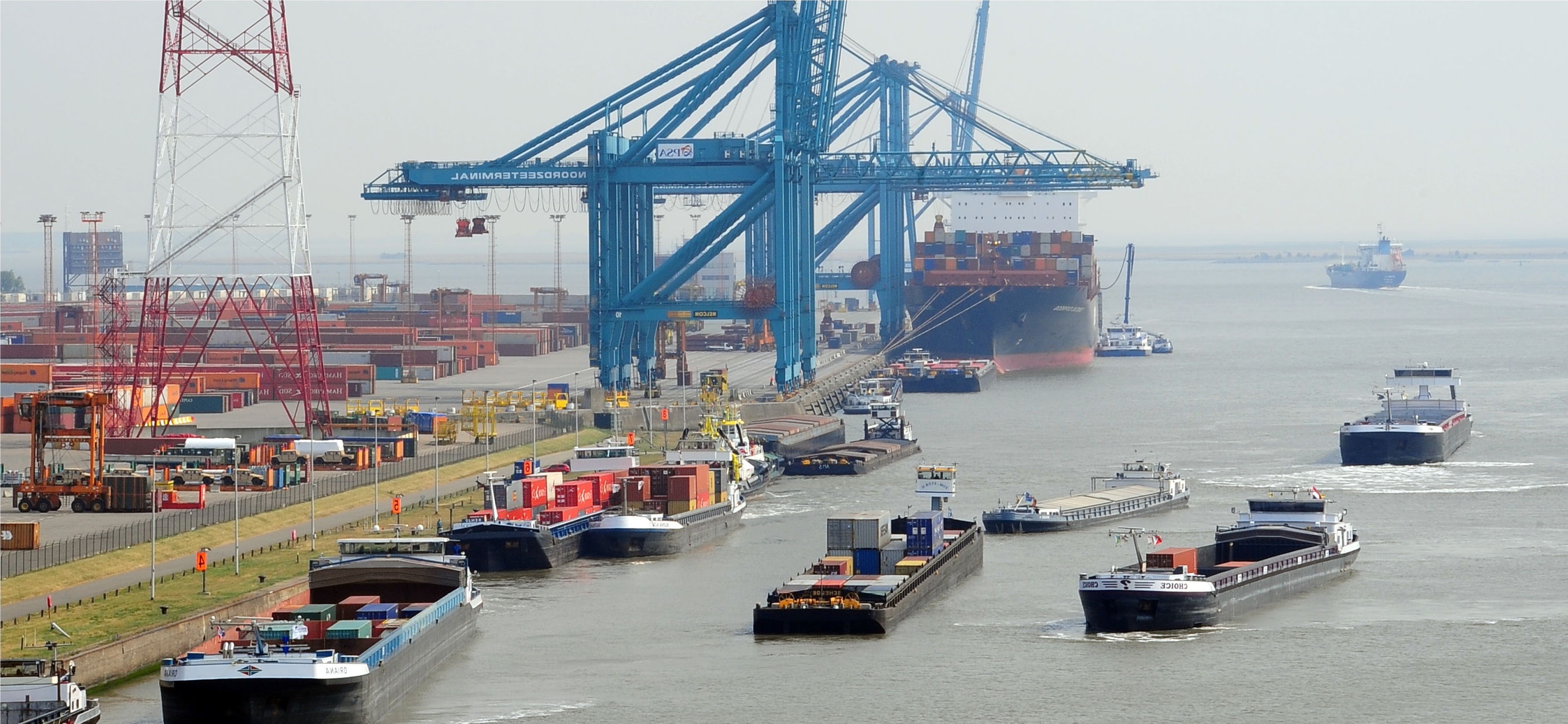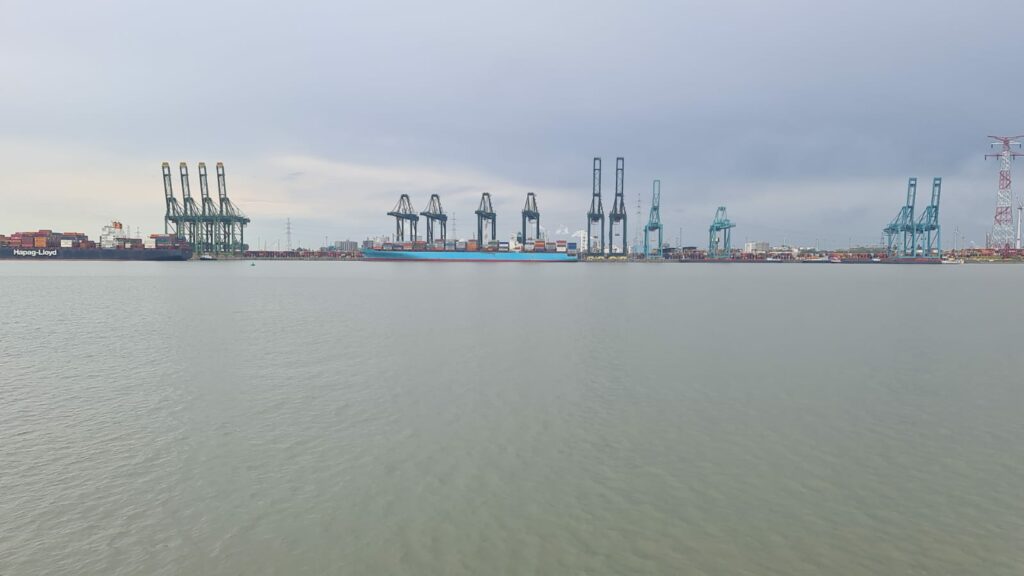A letter from Mrs Luwel and Pfeffer acting under the VOKA flag to the mayor of the city of Antwerp and the Alderman responsible for port, urban development, spatial planning and patrimony is demanding the resignation of Mr. Jacques Vandermeiren – CEO of the Port of Antwerp-Bruges. The press received a copy of the letter. The CEO of the Port of Antwerp-Bruges Mr Jacques Vandermeiren did not receive a copy of the letter.
A conflict with some major companies at the port, such as BASF, is said to be behind the demarche.
As the letter is addressing a conflict on Port of Antwerp-Bruges level one can wonder why it was not produced under the Alfaport-VOKA flag with Stephan Vanfraechem? Alfaport-VOKA aims for an accessible, enabling, cost-competitive and sustainable Antwerp port with a view to anchoring employment and added value in the port on a sustainable basis. So Alfaport-VOKA should be the prime driver in the relations between the Port related industry and the Port Authority.
Mr Luwen and Mr Pfeffer complain over the lack of open dialogue between the top management of the Port of Antwerp Bruges and the key stakeholders and customers of the beloved port. Luwel and Pfeffer write. “We see the same pattern every time: a lack of willingness to listen, an insistence on being right and a dogmatic attitude regarding the objectives as well as the path to be followed towards the climate and energy transition.”
As my granddad used to say; “it takes 2 to tango”. Likely it is a “both-to-blame” collision.
The main source of the conflict allegedly lies with BASF Antwerp, where CEO Jan Remeysen has been at the helm since 2020. There appears to be a wide gap between BASF Antwerp and Mr Vandermeiren policies and strategies. BASF established its presence in the Port of Antwerp in 1964. Since then, it has been an integral part of the region’s industrial landscape. Recently, in 2023, BASF was licensed by a.o. the Port of Antwerp-Bruges and expanded its ethylene oxide and derivatives complex at its site in the port of Antwerp. So what is the problem?
Vandermeiren is criticized to be too much at the forefront in the transition to hydrogen as a green energy source, without caring whether everyone is on board. As a port, Port of Antwerp-Bruges is strongly committed to developing infrastructure for green hydrogen. And yes, overall, the Port of Antwerp-Bruges with Jacques Vandermeiren at the helm is a frontrunner in renewal and innovation in climate and environmental actions, some examples of which are here.
Multifuel port
Over 90% of world trade goes by sea, which requires a lot of fuel. Port of Antwerp-Bruges is one of the largest bunker hubs in the world. It is the ambition of the Port of Antwerp-Bruges to be as much as possible a multifuel port to make various climate-neutral bunker fuels available in addition to the range of bio- and conventional bunker fuels.
Shore power
Shore power is an environmentally friendly and quiet way for ships to dock. Instead of using diesel generators, ships can connect to the electricity grid available at their berth. This reduces emissions and therefore contributes to the greening of ports. Numerous connection points are already available for barges and tugs. Port of Antwerp-Bruges is committed to also providing quayside electricity for the largest container vessels by 2028.
Antwerp@C
Antwerp@C is a project dedicated to innovative CO₂ reduction. Together with seven leading chemical and energy companies, Port of Antwerp-Bruges is working on the transition to a circular and climate-neutral port.
Hydrogen
Hydrogen plays an important role in the transition to a climate-neutral world. Port of Antwerp-Bruges is an active pioneer of the hydrogen economy and aims to take a leading position as a European import hub of green hydrogen.
Circular economy
In a circular economy, existing materials and products are shared, reused, repaired and recycled for as long as possible to create more value and close material cycles. The switch to a circular economy is part of the ambition of the Port of Antwerp-Bruges to be a climate-neutral port by 2050. The port area, with its industrial cluster, waste-processing companies and logistics sites, offers numerous opportunities to engage in circularity.
So much for the ambitions of the Port of Antwerp-Bruges with main driver CEO Jacques Vandermeiren and his Team. His policies and strategies are endorsed by the Board of Directors of the Port of Antwerp-Bruges consisting of 13 directors of which 9 politically assigned and 4 independents. So Luwel and Pfeffer also claiming the resignation of the Board of Directors?
The chemical industry has always actively contributed to the development of the port of Antwerp and its added value should certainly not be underestimated nor ignored. Study and research have nevertheless brought some less positive issues to light in recent years – not least the 3M scandal and PFAS pollution. The BASF expansion into ethylene oxide is likewise controversial. Ethylene oxide is harmful to the environment because of its toxicity and potential to contaminate water and soil.
But let’s go back to the letter of Mrs Luwel and Pfeffer. The letter also includes this remarkable chapter. “In the absolute majority of companies, there is a strong feeling of incomprehension, a lack of respect, and an attitude bordering on arrogance on the part of the top management of Port of Antwerp-Bruges. For a CEO of a de facto public administration, which depends to a very large extent on revenues from customers, this is inappropriate and worrying,” The writers are raising the alarm after a conversation between Vandermeiren and “senior representatives” of the very biggest players (BASF?) in our port got out of hand last month.
Who are these “majority of companies”? Where the writers have a valid point is that the Port of Antwerp-Bruges is de-facto a “public administration” which means beyond the range of BASF and 3M companies alike. It means that the Port of Antwerp-Bruges is accountable towards the public – not an alleged “absolute majority of companies”. Likewise, its CEO is accountable towards the Board of Directors.
The port of Antwerp-Bruges hosts 1.400 companies creating a total added value exceeding 20 billion euro representing 4,5% of the BNP of the Kingdom of Belgium. Today, the port of Antwerp-Bruges provides no less than 74,000 direct and 90,000 indirect jobs and is by far the biggest economic engine in the country.
If BASF is the main issue the letter represents 0.07143% in terms of companies and with 4000 workers 2,44 % of the workforce of the Port community.
It is remarkable that Alfaport-VOKA or his DG Stephan Vanfraechem, which are the voice of the port-related companies in the port of Antwerp-Bruges, is nowhere mentioned. What is his position on this?
So, it appears to be much more a clash of EGO’s. Little substance, no facts and figures and suspected conflicts of policies and strategies of “some” (?) important industry players on the one side and the common and public interests of the shipping & logistics industry represented by a.o. the Port of Antwerp-Bruges Authority on the other side.
Luc Luwel has been in charge of VOKA for many – maybe too many – years. Luwel is considered a great advocate for the interests of industry but is not an impeccable figure himself. His style is also considered arrogant, and he likes to be surrounded with all the honours while being a representative of an interest group in function of the companies. Did his weight loss also impacted the acid level balance in his system?
For this reason, did Fernand Huts of Katoen Natie turned his back on VOKA out of dissatisfaction with Luwel’s policies and behavour
Luwel and Pfeffer’s action has been labelled in port circles as “self-serving”. In a reaction, the Antwerp Shipping Association (ASV) says it does not support frontal attacks on the CEO of Port of Antwerp-Bruges.
Meanwhile, VOKA Antwerp-Waasland confirmed the letter to the Antwerp city council but nuanced the content. “The relationship between the private port community and the CEO of Port of Antwerp-Bruges has been thoroughly disrupted”. That Luwel and Pfeffer themselves are the cause of this disturbed relationship has apparently not dawned on them.
The name of Alderman Koen Kennis (N-VA) was already circulating as a possible successor to Jacques Vandermeiren. He can add this function to the 21 other mandates he “handles”. Although we had many very competent politicians as Alderman of the Port of Antwerp – who are also chairman of the Board of Directors – it appears wise to keep these functions separated. Do we really want a politician as CEO of the Port of Antwerp-Bruges?

